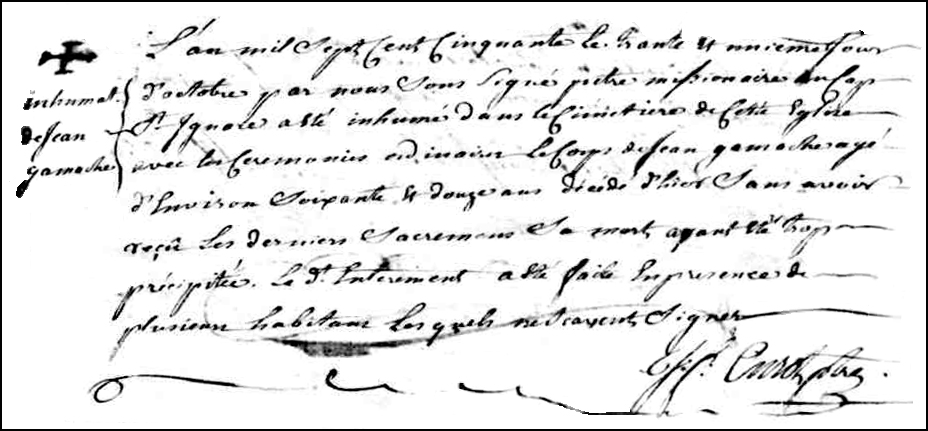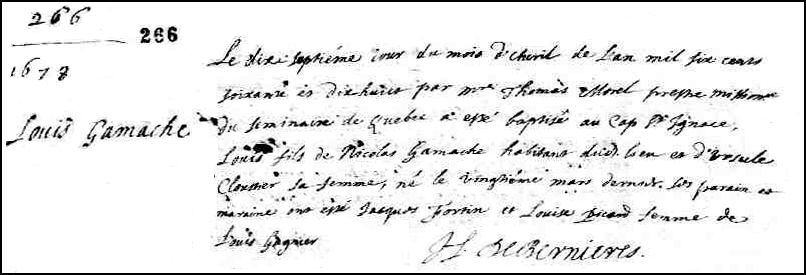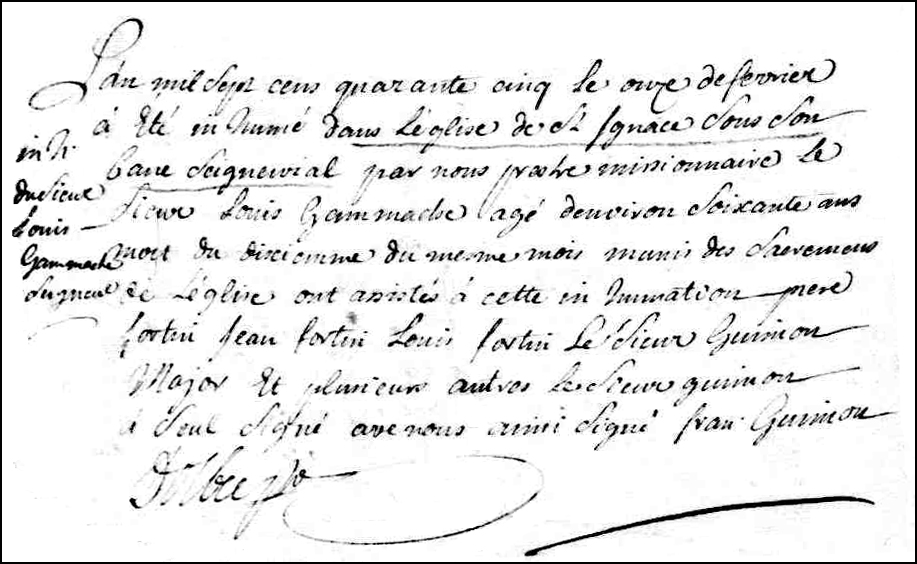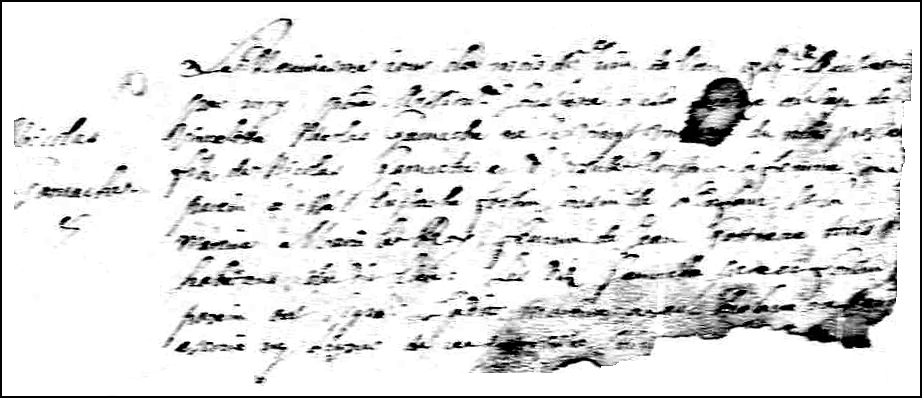On 30 Oct 1750, Jean Gamache, son of Nicolas Gamache and í‰lisabeth Ursule Cloutier, died. He was buried in the parish of Cap St. Ignace, New France on 31 Oct 1750.
The Death and Burial Record of Jean Gamache – 1750
SOURCE: Gabriel Drouin, comp. Drouin Collection. Montréal, Québec, Canada: Institut Généalogique Drouin. Parish of Cap St. Ignace, New France, 1750. Death and Burial Record of Jean Gamache, Front of Folio 22.
Click on the image above to enlarge it. Click on the link for a PDF copy of the Death and Burial Record of Jean Gamache – 1750. Translated from the French the record reads:
Bur[ial] of Jean Gamache
In the year one thousand seven hundred fifty, on the thirty first day
of October, by us, the undersigned missionary priest of Cap
St. Ignace, was buried in the cemetery of this Church
with the usual ceremonies, the body of Jean Gamache, age
about seventy two years, who died yesterday without having
received last rights. The death was too rapid.
The burial was made in the presence of
several residents who do not know how to write.
                          [signed] J[ean] F[raní§ois] Curot, priest
This record can be found as image 27/33 in the Québec Vital Records (Drouin Collection), 1621-1967 on Ancestry.com in the records for Cap St. Ignace 1747-1751. The record appears on the front of folio 22.
While searching for this record, I discovered that there were quite a number of deaths reported in Cap St. Ignace in October and November 1750. This observation suggests there may have been an epidemic of some sort in Cap St. Ignace at that time .
There were a few words I didn’t understand in this record. I’ll have to find someone more familiar with the French language who may be able to help.
UPDATE 08 Mar 2008: Gilles, The Nomadic Researcher, really helped me out with this record. I had problems reading the original French in two places, both of which Gilles provided for me.
The first was the phrase “avec les cérémonies ordinaires” which Gilles translated as “with the usual ceremonies”.
The second was the phrase “Sa mort ayant été trop précipitée” which Gilles translated as “The death was too rapid”.
Thanks, thanks, and more thanks, Gilles!
Copyright © 2008 by Stephen J. Danko














